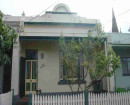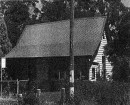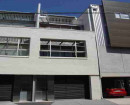CAB BUILDING AND HOUSE
177A-179 HIGH STREET MARYBOROUGH, CENTRAL GOLDFIELDS SHIRE
-
Add to tour
You must log in to do that.
-
Share
-
Shortlist place
You must log in to do that.
- Download report


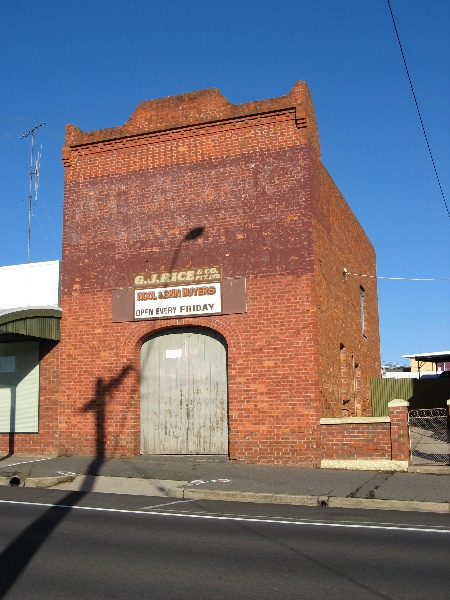
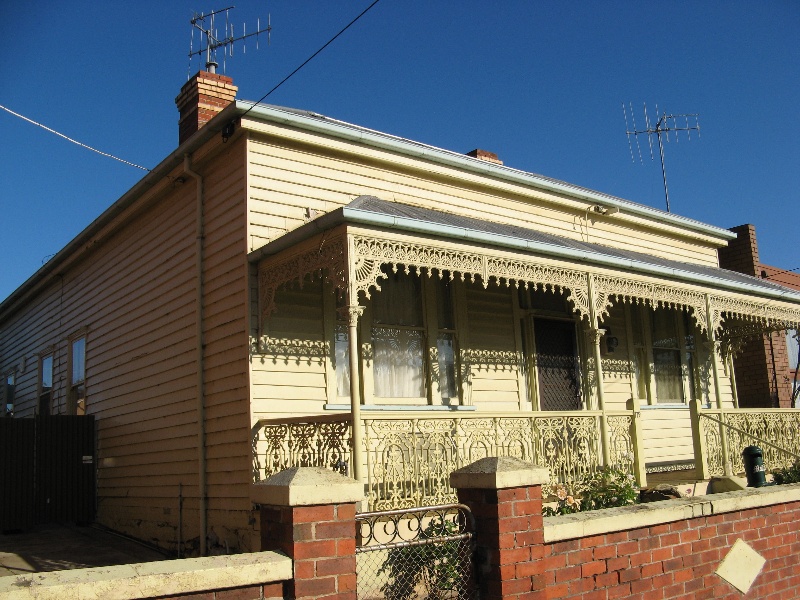
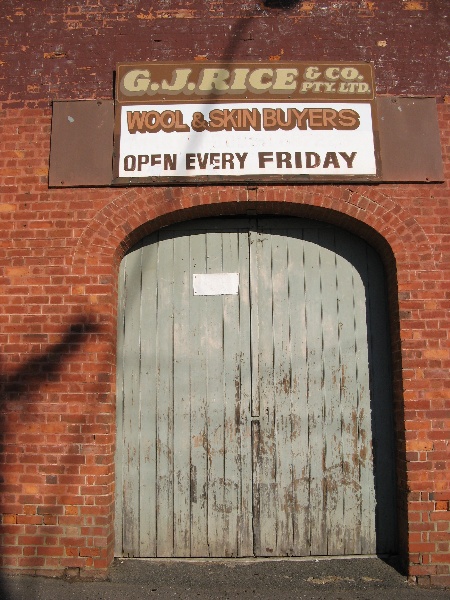
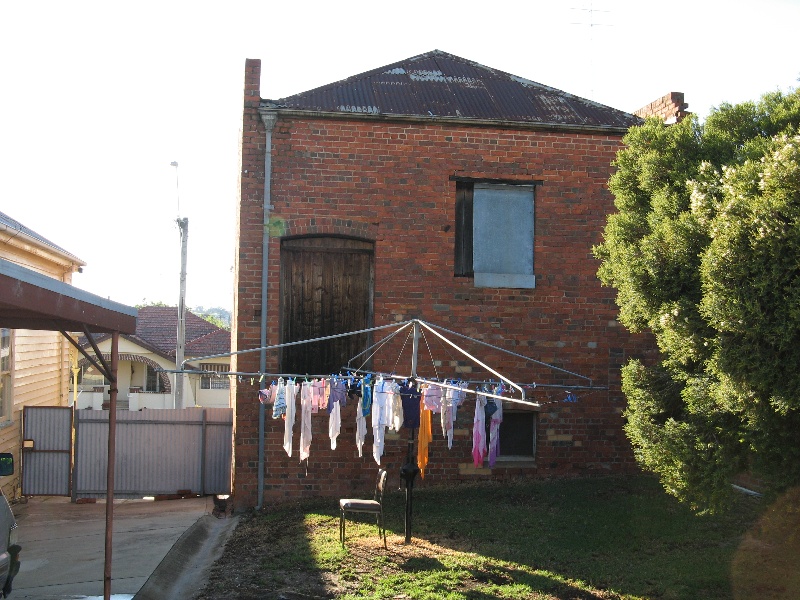
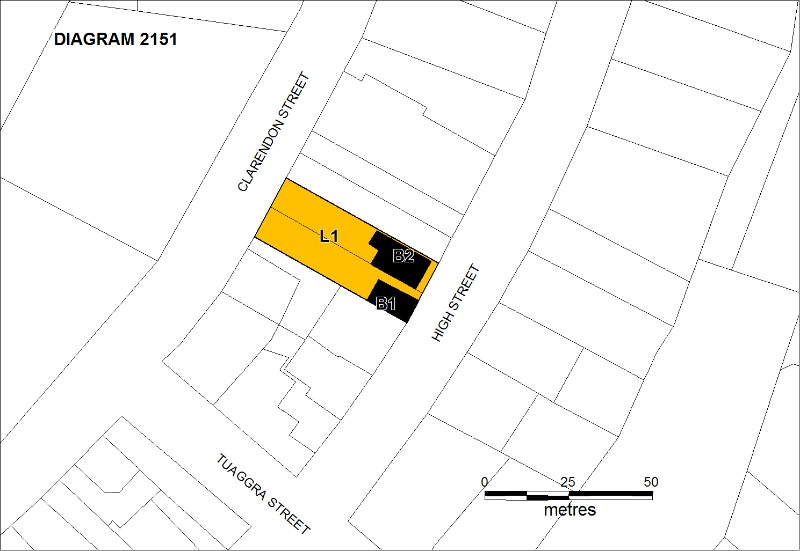
Statement of Significance
The cab building and house in High Street, Maryborough were built in the late nineteenth century by the horse cab proprietor Daniel Minahan as his business premises and residence. They were built at the edge of Maryborough's commercial precinct and at the beginning of the prestige residential area. The house was built before 1885, and the adjacent brick cab building in the early 1890s. There was also a single-storey timber stable at the rear, but this has now been demolished. Minahan operated a cab business in Maryborough, and is known to have had a cab stand outside one of the hotels in High Street. The cab building was later used by G J Rice & Co, whose name appears on a sign above the entrance, as wool and skin buying premises.
The cab building is a narrow, two-storey, rectangular plan, red brick building with a corrugated iron roof. The front facade has a brick parapet at the top, and an arched entrance with a pair of sliding timber doors opening directly onto the High Street footpath. The ground floor is open, which would have been a suitable space for the storage of horse cabs, and there is a timber loft above. The ground floor is now concreted. The house is a symmetrical single storey weatherboard cottage with a hipped corrugated iron roof, and a verandah across the front with a cast iron balustrade and frieze. Internally it has a standard nineteenth century plan with a central passage from front to rear.
How is it significant?
The cab building is of architectural significance, the cab building and house are of historical significance and the site is of archaeological significance to the State of Victoria.
Why is it significant?
The cab building is historically significant as a rare surviving example in Victoria of a nineteenth century horse cab building, and is a reminder of a means of transport, and of an industry, which was essential until the twentieth century, and has now completely disappeared. Such buildings associated with horse transport were once extremely common, but few now surviving in the state.
The cab building is architecturally significant as an intact example of a now rare building type, a nineteenth century utilitarian structure used as horse cab premises.
The cab building and house are historically significant as a representative and now unusual example of a small nineteenth century business operation, with the owner living adjacent to his business premises.
The site is archaeologically significant as it has the potential to contain deposits associated with the former use of part of the site as stables.
-
-
CAB BUILDING AND HOUSE - History
Contextual history
The name 'cab' comes from an abbreviation of cabriolet, a two-seat, two-wheeled carriage introduced in England in 1823 and very popular for its speed and comfort. From the middle of the nineteenth century two types of cab began to dominate, the two-wheeled hansom, a fast and elegant carriage, and the ponderous four-wheeled 'growler' which, with its luggage carrying ability was to be found mostly at railway stations. [http://www.lvta.co.uk/history.htm]
Hansom cabs enjoyed immense popularity as they were fast, light enough to be pulled by a single horse, (making the journey cheaper than traveling in a larger four-wheel coach) and were easily steered. The cab sat two passengers (three if squeezed in) and a driver who sat on a sprung seat behind the vehicle. The passengers were able to give their instructions to the driver through a trap door near the rear of the roof. They could also pay the driver through this hatch and he would then operate a lever to release the doors so they could alight. The passengers were protected from the elements by the cab itself, as well as by folding wooden doors which enclosed their feet and legs, protecting their clothes from splashing mud. Later versions also had an up-and-over glass window above the doors to complete the enclosure of the passengers. Additionally, a curved fender mounted forward of the doors protected passengers from the stones thrown up by the flying hooves of the horse. The cab enjoyed popularity in the United Kingdom until the 1920s, when cheap automobile transport and the construction of reliable mass-transport systems led to a decline in usage. The last license for a horse-drawn cab in London was issued in 1947. [http://en.wikipedia.org/wiki/Hansom_cab]
Horse cabs stands were often located at railway stations, theatres, hotels, etc. In 1893 London had over six hundred cabstands.
A variety of buildings were common until the twentieth century to accommodate horses and vehicles. Stables were essential and common structures until motor vehicles replaced horses for the transport of people and goods in the twentieth century. Private stables were commonly attached to houses of any pretension, and were usually associated with hotels and inns. Livery stables were also established to accommodate and look after horses for owners who did not have their own stables, and to provide horses and carriages for hire. Livery stables were an essential feature of life in the nineteenth century and were once common in cities and towns throughout Victoria, for example in 1902 there were 128 livery stables in Melbourne and its suburbs. The years leading up to World War I marked the peak of horse transport for individuals and haulage, and following this business gradually declined and the buildings were either demolished or were re-used for other purposes.
History of place
The timber house and the brick horse cab building in High Street, Maryborough were built by the horse cab proprietor Daniel Minahan. They were built at the very edge of the commercial precinct, at the beginning of the commencement of Maryborough's prestige residential area. The house was built before 1885, and had the adjacent brick cab building in the early 1890s. There was also a single-storey timber stable at the rear, but this has now been demolished.
The house was owned by Mary Minehan from the late 1880s to late 1900s, and had a number of owners after that. The cab building was later owned by G J Rice & Company wool and skin buyers as their wool and skin buying premises.
CAB BUILDING AND HOUSE - Assessment Against Criteria
The historical importance, association with or relationship to Victoria's history of the place or object
The Maryborough cab building and house are reminders of the importance of horses for transportation in the nineteenth and early twentieth centuries, and the variety of buildings once associated with the industry. They also reflect the once common practice of people living adjacent to their business premises.
b. The importance of a place or object in demonstrating rarity or uniqueness
Although buildings associated with public horse transportation were once extremely common, and were found in every town throughout the state, most of the buildings associated with this industry have now disappeared. These Maryborough buildings now comprise the only known example of a horse cab business surviving in Victoria. The significance is increased by the survival of both the cab building, once used for the accommodation of the carriages, and the adjacent residence built by the proprietor for his own use.
c. The place or object's potential to educate, illustrate or provide further scientific investigation in relation to Victoria's cultural heritage
The site has archaeological potential for the site of the stable building, an essential part of the business, once located at the rear of the cab building but now demolished.
d. The importance of a place or object in exhibiting the principal characteristics or the representative nature of a place or object as part of a class or type of places or objects
The site is important as a rare surviving example of a once common building type.
e. The importance of the place or object in exhibiting good design or aesthetic characteristics and/or in exhibiting a richness, diversity or unusual integration of features
f. The importance of the place or object in demonstrating or being associated with scientific or technical innovations or achievements
g. The importance of the place or object in demonstrating social or cultural association
h. Any other matter which the Council deems relevant to the determination of cultural heritage significance
CAB BUILDING AND HOUSE - Plaque Citation
This rare surviving example of a horse cab business was operated by Daniel Minahan who lived in the adjacent house. In the nineteenth century horse cab businesses were common and proprietors often lived on the premises.
CAB BUILDING AND HOUSE - Permit Exemptions
General Exemptions:General exemptions apply to all places and objects included in the Victorian Heritage Register (VHR). General exemptions have been designed to allow everyday activities, maintenance and changes to your property, which don’t harm its cultural heritage significance, to proceed without the need to obtain approvals under the Heritage Act 2017.Places of worship: In some circumstances, you can alter a place of worship to accommodate religious practices without a permit, but you must notify the Executive Director of Heritage Victoria before you start the works or activities at least 20 business days before the works or activities are to commence.Subdivision/consolidation: Permit exemptions exist for some subdivisions and consolidations. If the subdivision or consolidation is in accordance with a planning permit granted under Part 4 of the Planning and Environment Act 1987 and the application for the planning permit was referred to the Executive Director of Heritage Victoria as a determining referral authority, a permit is not required.Specific exemptions may also apply to your registered place or object. If applicable, these are listed below. Specific exemptions are tailored to the conservation and management needs of an individual registered place or object and set out works and activities that are exempt from the requirements of a permit. Specific exemptions prevail if they conflict with general exemptions. Find out more about heritage permit exemptions here.Specific Exemptions:General Conditions:
1. All alterations are to be planned and carried out in a manner which prevents damage to the fabric of the registered place.
2. Should it become apparent during further inspection or the carrying out of alterations that originally or previously hidden or inaccessible details of the place are revealed which relate to the significance of the place, then the exemption covering such alteration shall cease and the Executive Director shall be notified as soon as possible.
3. If there is a conservation policy and plan approved by the Executive Director, all works will be in accordance with it.
4. Nothing in this declaration prevents the Executive Director from amending or rescinding all or any of the permit exemptions.
5. Nothing in this declaration exempts owners or their agents from the responsibility to seek relevant planning or building permits from the responsible authority where applicable.
Interiors:
Works to the interior of the house are exempt from permits.
Exteriors:
Removal of extraneous items such as air conditioners, pipe work, ducting, wiring, antennae, aerials etc, and making good.
Installation and repairing of damp proofing by either injection method or grout pocket method.
Installation or removal of external fixtures and fittings such as, hot water services and taps.
CAB BUILDING AND HOUSE - Permit Exemption Policy
The purpose of the Permit Policy is to assist when considering or making decisions regarding works to the place. It is recommended that any proposed works be discussed with an officer of Heritage Victoria prior to them being undertaken or a permit is applied for. Discussing any proposed works will assist in answering any questions the owner may have and aid any decisions regarding works to the place. It is recommended that a Conservation Management Plan is undertaken to assist with the future management of the cultural significance of the place. The addition of new buildings to the site may impact upon the cultural heritage significance of the place. The purpose of this requirement is not to prevent any further development on this site, but to enable control of possible adverse impacts on heritage significance during that process.
The significance of the place lies in its rarity and intactness as a late nineteenth century cab business with an associated residence. The exterior appearance and the mezzanine loft in the interior of the cab building are important, as is the relationship between the house and the cab building. Any alterations that impact on the external appearance of the cab building or cottage are subject to permit application but works to the interior of the house are exempt from permits. The place is considered to have the potential to contain historical archaeological deposits associated with the use of part of the site as a stables during the nineteenth century.
-
-
-
-
-
MARYBOROUGH COURT HOUSE
 Victorian Heritage Register H1475
Victorian Heritage Register H1475 -
MARYBOROUGH RAILWAY STATION
 Victorian Heritage Register H1577
Victorian Heritage Register H1577 -
PRINCE'S PARK
 Victorian Heritage Register H1880
Victorian Heritage Register H1880
-
'Lawn House' (Former)
 Hobsons Bay City
Hobsons Bay City -
1 Fairchild Street
 Yarra City
Yarra City -
10 Richardson Street
 Yarra City
Yarra City
-
-








